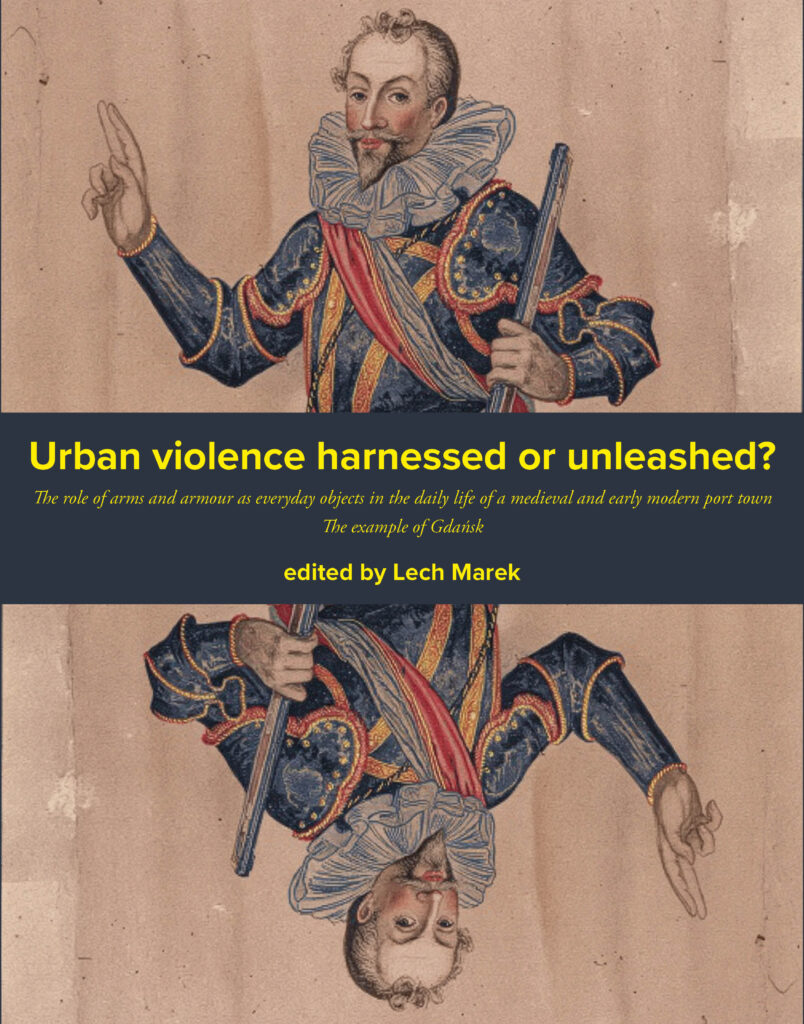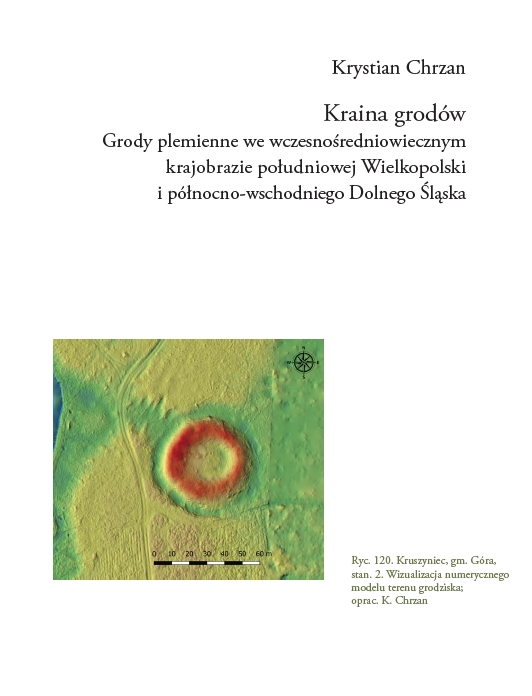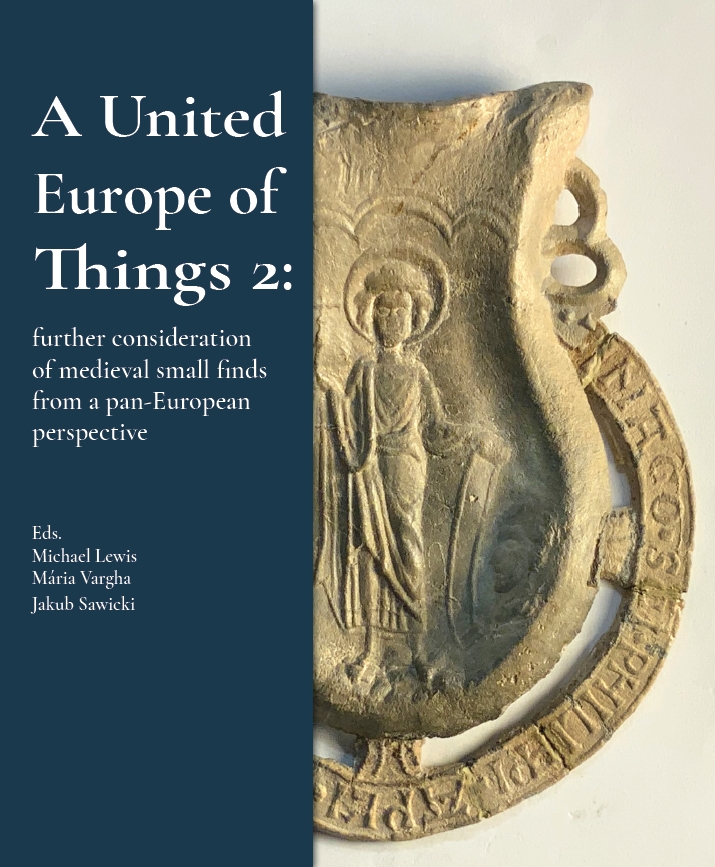Your cart is currently empty!

Archaeological Announcements for Autumn
This summer has been very busy for us. In addition to the third issue of the “Archeologicznych Zeszytów Sprawozdawczych”, we have been preparing materials for three conferences, there have been layouts and typesetting of publications on commission, a flurry of editorial work and translations, as well as three new books that we are publishing in collaboration with several scientific institutions. Not all news can fit into one post, so here it is, step by step.
All three titles are already in print, and as soon as the printing house delivers the freshly inked volumes, they will be available for purchase in our online store.
Urban violence harnessed or unleashed? The role of arms and armour as everyday objects in the daily life of a medieval and early modern port town: The example of Gdańsk
edited by Lech Marek
Wyd. Instytut Archeologii Uniwersytetu Wrocławskiego, Muzeum Archeologiczne w Gdańsku oraz Yellow Point Publications
- Introduction (Lech Marek)
- The Spatial Development of Gdańsk and the Characteristics of the Investigated Areas (Zofia Maciakowska)
- Context and Chronology of the Finds (Bogdan Kościński)
- What Implements of Violence Does Attire Include? The Occurrence, Use, Status, and Symbolic Meaning of Edged and Hafted Weapons in Medieval and Early Modern Gdańsk (Lech Marek)
- ‘Arma Diaboli’? The Crossbow in Medieval and Early Modern Gdańsk (Keith Dowen)
- ‘Armatus Corpus’: Armour and Identity in Medieval and Renaissance Gdańsk (Keith Dowen)
- Archaeometric Studies of Selected Artefacts from Gdańsk (Beata Miazga)
- The Arms and Armour of the Gdańsk Townspeople and Their Duties Regarding the City’s Order and Defence (Zofia Maciakowska)
- Summary (Lech Marek)
- Catalogue of Archaeological Sources (Lech Marek)
Krystian Chrzan
Kraina grodów. Grody plemienne we wczesnośredniowiecznym krajobrazie południowej Wielkopolski i północno-wschodniego Dolnego Śląska
Wyd. Instytut Archeologii i Etnologii Polskiej Akademii Nauk
„Kraina grodów” is an interdisciplinary tale about the relics of early medieval fortified settlements from the area of northeastern Lower Silesia and southern Greater Poland – their forms, functions, and significance in the lives of ancient Slavic communities. The author, combining the latest archaeological methods with reflection on the landscape and social structure of the era, presents 84 sites as elements of a larger narrative about the tribal world before the establishment of the Piast state. The book goes beyond a mere description of sources, raising questions about how people of that time perceived space, what the fortresses meant to them, and how they fit into daily life and the spirituality of pre-Christian Slavs. It is not only an archaeological study but also an attempt to reconstruct a world whose material traces continue to shape our cultural landscape.
A United Europe of Things 2: further consideration of medieval small finds from a pan-European perspective
Eds. Michael Lewis, Mária Vargha, Jakub Sawicki
Wydanie przy wsparciu Medieval European Research Community i European Medieval Finds (EMF)
- Michael Lewis, Introduction
- Milica Radišić, Why Did It Become So Popular? Twisted and Braided Jewellery from the Formative Period of the Hungarian State in the Carpathian Basin.
- Daniela Marcu Istrate, Keeping Memory, Fastening Clothes: Two Eight-Pointed Star-Shaped Brooches as Funerary Goods from the Medieval Cemetery in Alba Iulia (Péter Levente Szőcs, Late Medieval and Early Modern Pins from Satu Mare County (Romania) and its Surroundings:variations of forms, decoration and function
- Radosław Zdaniewicz, Dress Accessories from the 14th-15th century Motte and Bailey Castle of Ciochowice, Upper Silesia (Poland)
- Anastasia Fedorina & Nikolay Makarov, Suzdal (Russia) Archangels: between the symbolism and spatial distribution
- Mette Højmark Søvsø, The Afterlife of Pilgrim Signs in Europe: use, re-use and ritual practice
- Michael Lewis, Lettering on Late Medieval Lead Ampullae: English and Welsh finds within a European context
- Rob Webley, Therein Lies the Point: a study of knife sheath chapes from cross-Channel Europe
- Mária Vargha, Striking Impressions: tools of a metalworker from medieval rural Hungary
- Dana Piessens, Gauged Stoneware Measures from the Low Countries: a lesser-known category of finds
- Fabian Brenker, Everyday Objects: traces of wear as sources for daily use of artefacts
- Jasmin Özyurt, Claudia Perstling, Bendeguz Tobias, Kathrin Siegl, Ralf Totschnig,
- Carla Warbanoff & Raphael Wedam, Out of Context: medieval small finds from Apetlon, Burgenland, Austria
POPRZEDNI WPIS
NASTĘPNY WPIS



